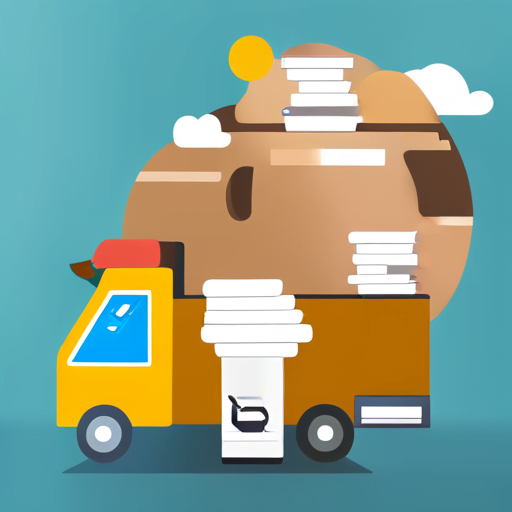Do you love reading but also want to do your part in helping the environment? Have you ever wondered whether e-reading or physical books have a greater impact on the environment?
In this article, we will explore the environmental impact of e-reading versus physical books and provide you with the information you need to make an informed decision.
When it comes to reading, there are pros and cons to both e-reading and physical books. While e-reading offers convenience and accessibility, physical books offer the pleasure of holding a tangible object and the ability to easily share or lend them to others.
But what about the environmental impact of these two options? Let’s take a closer look at the manufacturing process, transportation and distribution, and disposal and recycling of e-readers and physical books to see which option is more environmentally friendly.
Table of Contents
Manufacturing Process of E-Readers and Physical Books

You’ll be surprised to learn about the fascinating differences between how e-readers and physical books are made.
The manufacturing process of e-readers involves the use of various materials, such as plastics and metals, which require mining and extraction. The process also involves the assembly of different parts, including the screen, battery, and casing, which require significant amounts of energy.
On the other hand, the manufacturing process of physical books involves the use of paper, ink, and glue, which are derived from renewable sources such as trees. The process also involves printing and binding, which require energy but to a lesser extent than e-readers.
However, the transportation of physical books to various locations worldwide contributes significantly to their carbon footprint.
Overall, while the manufacturing process of e-readers and physical books differ significantly, both have an environmental impact. E-readers require more energy and materials, while physical books require the use of paper, ink, and glue.
However, the environmental impact of physical books is also affected by transportation and distribution. It’s essential to consider these factors when deciding which option to choose.
Transportation and Distribution

When you order a book online, it’s likely that it will be transported and delivered to you, which can contribute to carbon emissions and fuel consumption. The transportation process for physical books involves the use of trucks, planes, and ships to move them from the printing press to warehouses and then to the final destination.
On the other hand, e-books require no transportation as they are delivered digitally, eliminating the need for fuel consumption and carbon emissions. However, the transportation and distribution process of e-readers is also a factor to consider.
E-readers are manufactured in one location and then shipped to various locations around the world. This transportation process can also contribute to carbon emissions and fuel consumption. Additionally, the packaging materials used for both e-readers and physical books can also have an impact on the environment.
Overall, while the transportation and distribution of physical books can contribute to carbon emissions and fuel consumption, the same can be said for e-readers. However, the difference lies in the fact that e-readers can be used to read countless books, eliminating the need for the transportation and distribution of physical books. Additionally, efforts can be made to reduce the carbon footprint of transportation and distribution through sustainable practices such as using electric vehicles and minimizing packaging materials.
Disposal and Recycling

Now that you’ve finished reading your book, it’s time to think about what to do with it – recycling is a great option! E-books may seem like the more environmentally-friendly option, but they still have an environmental impact.
When it comes to disposing of physical books, there are a few things you should keep in mind.
Firstly, recycling is the best option. Paper is one of the most commonly recycled materials, and recycling just one ton of paper saves 17 trees, 7,000 gallons of water, and 463 gallons of oil. When disposing of your books, look for recycling programs in your area. Many libraries have book recycling programs, or you can find local recycling centers that accept books.
Secondly, consider donating your books. If your books are still in good condition, consider donating them to a local library, school, or charity. This reduces waste and gives someone else the opportunity to enjoy the book you’ve finished. You can also sell your books online or at used bookstores.
In conclusion, it’s important to consider the environmental impact of both e-reading and physical books. While e-books may seem like the greener option, the production and disposal of e-readers and devices contribute to electronic waste.
When it comes to disposing of physical books, recycling and donating are the best options. By taking these small steps, you can reduce waste and help protect the environment.
Conclusion: The Environmental Impact of E-Reading versus Physical Books

It’s important to consider the overall sustainability of our reading habits and the potential consequences on our planet. When it comes to the environmental impact of e-reading versus physical books, it’s clear that e-reading has a smaller carbon footprint.
E-readers require fewer resources to produce and transport, and they don’t contribute to deforestation or paper waste.
However, it’s important to note that e-readers and other electronic devices have their own environmental impact. The production and disposal of these devices require significant amounts of energy and resources, and they can contribute to electronic waste. Additionally, the energy required to power e-readers and other devices can have a significant carbon footprint, especially if that energy comes from non-renewable sources.
Overall, the environmental impact of e-reading versus physical books is complex and multifaceted. While e-reading has a smaller carbon footprint in terms of production and transportation, it’s important to consider the environmental impact of electronic devices and the energy required to power them.
Ultimately, the most sustainable reading habits will depend on a variety of factors, including personal preferences, access to resources, and environmental priorities.
Frequently Asked Questions
How does the environmental impact of e-reading compare to audiobooks or other digital media?
If you’re wondering about the environmental impact of e-reading versus audiobooks or other digital media, you may be surprised to learn that they all have a similar carbon footprint. While e-readers and other devices require energy to manufacture and charge, they also eliminate the need for paper production and transportation.
Similarly, while audiobooks and other digital media require energy to produce and distribute, they don’t have the same physical waste as physical books or CDs. Ultimately, the environmental impact of your reading habits may come down to your individual device usage and charging habits.
What is the impact of library lending programs on the environmental impact of physical books?
If you’re someone who still loves the experience of reading physical books, you might be wondering about the environmental impact of borrowing books from the library. After all, libraries are meant to be a sustainable solution for book-lovers who can’t afford to buy books or don’t have the space to store them.
But the truth is that library lending programs have a significant impact on the environment, from the resources required to produce and transport books to the energy needed to power libraries and maintain their collections. While libraries are doing their best to implement sustainable practices and reduce their carbon footprint, it’s important to acknowledge that physical books still have a significant environmental impact, even when they’re borrowed rather than bought.
How do e-readers and physical books compare in terms of their energy consumption during use?
When it comes to energy consumption during use, e-readers and physical books have some key differences. E-readers require power to function, whether that’s from a battery or being plugged in. Physical books, on the other hand, require no power at all.
While e-readers certainly have an environmental impact in terms of their production and eventual disposal, their energy consumption during use is relatively low. That being said, if you’re looking to reduce your energy consumption, opting for physical books might be the way to go.
What are the potential long-term environmental effects of the materials used in e-readers and physical books?
When you consider the materials used in e-readers and physical books, there are potential long-term environmental effects to be considered. E-readers are made with materials like plastic and rare metals, which can be difficult to recycle and may have a negative impact on the environment if not disposed of properly.
Physical books, on the other hand, are made from paper which comes from trees. While paper is a renewable resource, the process of making it can be energy-intensive and can contribute to deforestation if not done sustainably.
It’s important to weigh the environmental impact of both options when making a decision about what to read.
Is there a significant difference in the carbon emissions produced by the manufacturing processes of e-readers and physical books?
Do you know if there’s a big difference in carbon emissions produced by the manufacturing processes of e-readers and physical books? It’s an important question to ask, as we strive to reduce our carbon footprint.
The answer is that e-readers generally have a higher carbon footprint during the manufacturing process, due to the materials used and the energy required to produce them. However, over time, e-readers become more environmentally friendly as they don’t require the production of new books or the transportation of them.
In contrast, physical books have a lower carbon footprint during the manufacturing process, but the transportation of them can add up quickly, especially when it comes to international shipping.
Ultimately, the best choice for the environment depends on how often you read and your personal preferences.
Conclusion
You’ve learned about the environmental impact of e-reading versus physical books, and it’s clear that both have their drawbacks. While e-readers require energy and resources to manufacture, they ultimately have a smaller carbon footprint due to their efficient distribution and lack of paper waste.
On the other hand, physical books have a higher carbon footprint due to the paper production and transportation involved, but they can be recycled and reused.
Ultimately, the choice between e-reading and physical books comes down to personal preference and values. If you prioritize minimizing your carbon footprint, e-reading may be the better option. However, if you value the physical experience of holding a book and want to support sustainable paper production and recycling efforts, physical books may be the way to go.
Either way, it’s important to consider the environmental impact of your reading habits and make conscious choices.
